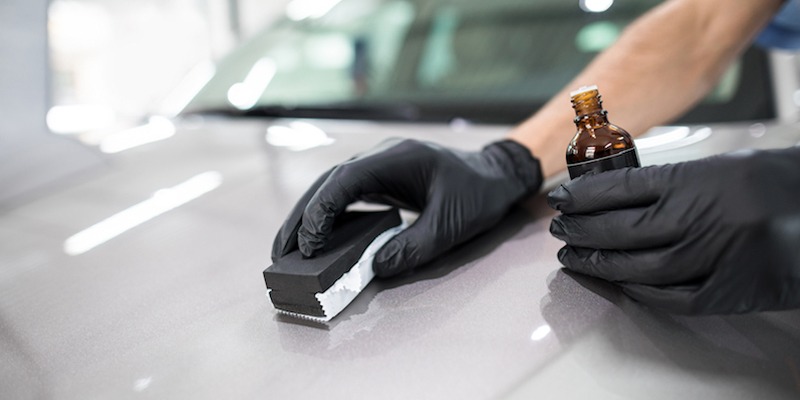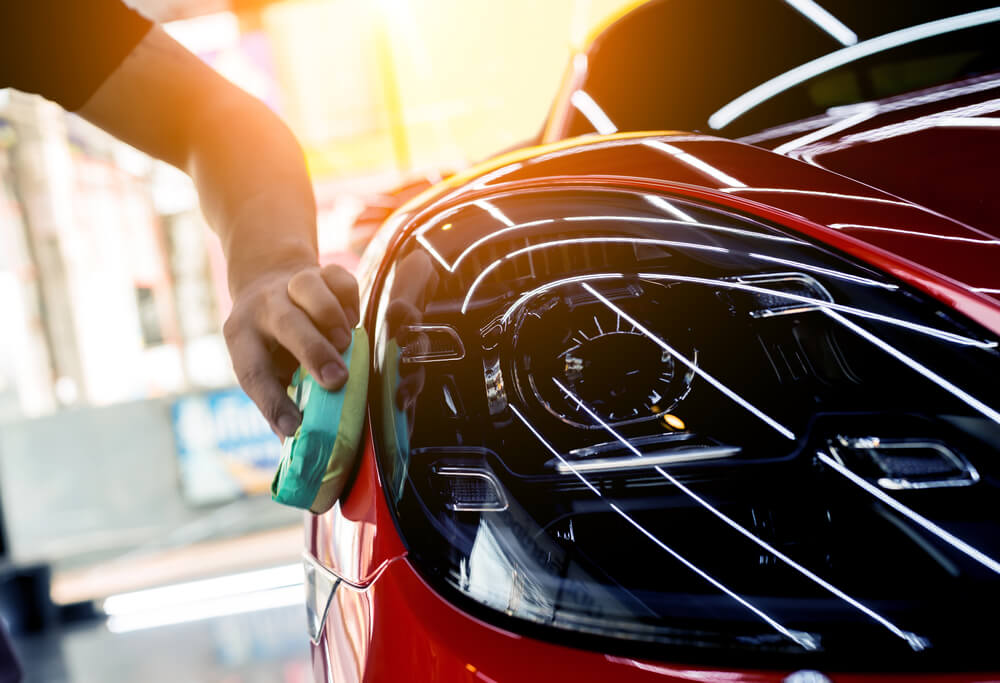The Cost of Ceramic Coating: Is It Worth the Financial investment?
The Cost of Ceramic Coating: Is It Worth the Financial investment?
Blog Article
The Value of Ceramic Coating: Securing Your Auto's Exterior With Accuracy
In an era where maintaining the practical and visual stability of your car is critical, ceramic finish emerges as a crucial solution. With its one-of-a-kind bonding residential properties, ceramic finishing uses a degree of protection that far goes beyond typical waxing approaches.
Advantages of Ceramic Coating
When it concerns maintaining a cars and truck's aesthetic charm, ceramic finish uses substantial advantages. This innovative protective layer gives a resilient shield versus ecological impurities, consisting of dirt, grime, and unsafe UV rays. By developing a semi-permanent bond with the automobile's paint, ceramic finishings properly avoid oxidation and fading, guaranteeing that the vehicle maintains a shiny, showroom-like surface for an extensive duration. This not only improves the car's aesthetic allure however also adds to its long-lasting worth.
In enhancement to its protective qualities, ceramic covering uses remarkable hydrophobic properties, triggering water and various other liquids to bead off easily. This function streamlines the cleaning process, as dust and debris are much less likely to stick to the surface, decreasing the frequency and effort needed for upkeep. The finishing's resistance to chemical spots from acidic impurities like bird droppings and tree sap is one more notable advantage, decreasing possible paint damages.
Ceramic layers likewise enhance scrape resistance, offering a layer that can absorb minor abrasions and swirl marks. This attribute is particularly valuable in maintaining an excellent surface, decreasing the chance of noticeable blemishes and protecting the integrity of the automobile's paintwork in time.

How Ceramic Finishing Works
Understanding the technicians behind ceramic layer exposes its efficiency as a protective service for vehicles. Ceramic finishings are essentially fluid polymer applications that chemically bond with a vehicle's manufacturing facility paint, creating a protective layer. This layer acts as an obstacle against ecological contaminants such as crud, ultraviolet, and dust rays, which can weaken a car's outside with time. The essential element in ceramic finishing is silicon dioxide (SiO2), which originates from quartz crystals and is recognized for its exceptional solidity and sturdiness.
Application of ceramic finish entails a meticulous process. Originally, the automobile's surface must be thoroughly cleaned up and sanitized to guarantee optimum adhesion. As soon as used, the fluid polymer develops a semi-permanent bond with the paint, hardening into a transparent, long lasting shield. This guard enhances the vehicle's gloss and hydrophobic residential properties, promoting simpler cleansing by creating water and impurities to bead and slide off effortlessly.
Furthermore, the finishing's molecular structure gives resistance to small scratches and chemical stains. Unlike waxes or sealants that sit on top of the paint, ceramic finishes integrate with the surface area, supplying lasting protection. This assimilation is essential to its effectiveness, guaranteeing the automobile's coating remains immaculate for years.
Contrasting Ceramic Coating to Alternatives
In the realm of automobile protection, ceramic finish stands as a formidable option when compared to conventional options such as waxes and sealants. While waxes offer a temporary lustrous finish, normally lasting just a few weeks to months, ceramic coverings give a longer-lasting service, frequently enduring for years. This sturdiness is credited to the chemical bonding that takes place when ceramic finishings are applied, developing a strong layer that is immune to ecological risks.
Contrastingly, sealants, although even more resistant than waxes, still disappoint the durable defense offered by ceramic finishings. Sealants can normally last for up to a year, offering an artificial guard against particular components. However, they lack the superior hydrophobic buildings and UV security that ceramic coatings supply.
Additionally, ceramic coatings use boosted scratch resistance, which neither waxes neither sealants can effectively match. In summary, while traditional waxes and sealers provide basic protection, ceramic finishings provide a thorough, long-term remedy that significantly enhances and preserves the lorry's outside finish.
Application Refine Explained
Using ceramic layer to a lorry calls for a precise process to ensure optimal results and sturdiness. Once cleaned up, the automobile is dried out and polished to get rid of any kind of blemishes, as any type of existing scrapes or swirls can come to be more obvious after the coating is used.
Adhering to surface area preparation, the application of the ceramic layer starts. The finish is generally applied in find out a climate-controlled setting to stop dust particles from choosing the newly cleansed surface area. Utilizing an applicator pad, the ceramic coating is applied in little sections to make certain also insurance coverage. It is important to adhere to the supplier's guidelines relating to the suitable treating time and application thickness.
After application, the layer needs a details curing period, throughout which the lorry needs to be shielded from water and contaminants. This treating procedure can vary relying on the product but generally varies from 24 to 2 days. Eventually, this comprehensive process is essential in accomplishing a resistant and shiny finish.
Upkeep Tips for Durability
To maintain the longevity of a ceramic covering, adherence to a regimented maintenance routine is crucial. Routine cleaning is paramount; use a pH-neutral cars and truck hair shampoo and soft microfiber mitts to avoid abrasions. Stay look at these guys clear of automated automobile washes, as their harsh brushes can compromise the layer's stability. Instead, choose a hand clean to make sure thorough yet gentle cleaning.
Post-wash, drying the automobile with a tidy microfiber towel avoids water places that might deteriorate the covering with time. Additionally, use a ceramic coating booster every few months. These boosters enhance the hydrophobic properties and improve the finishing's protective abilities, guaranteeing it stays reliable against contaminants.
Bear in mind that auto parking places play a critical function in maintenance. ceramic coating. Whenever possible, park in shaded areas to decrease UV direct exposure, which can gradually deteriorate the finishing. For long-lasting storage space, consider using an auto cover for added security against ecological components
Conclusion
In final thought, ceramic layer serves as a vital protective layer for lorry outsides, providing lasting protection versus environmental variables such as grime, uv, and dust rays. Comprehending the application procedure and adhering to maintenance recommendations are necessary for maximizing the durability and performance of ceramic covering.
When it comes to preserving a vehicle's visual charm, ceramic layer provides considerable advantages. By forming a semi-permanent bond with the car's paint, ceramic layers properly avoid oxidation and fading, guaranteeing that the car maintains a glossy, showroom-like finish for an extensive duration. Ceramic coverings are essentially liquid polymer applications that chemically bond with a vehicle's factory paint, producing a protective layer. In summary, while conventional waxes and sealers offer standard defense, ceramic finishings provide an extensive, long-lasting remedy that substantially enhances and preserves the vehicle's outside finish.

Report this page